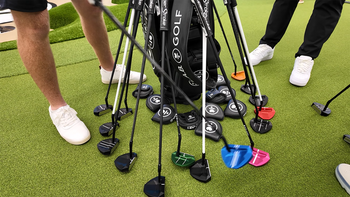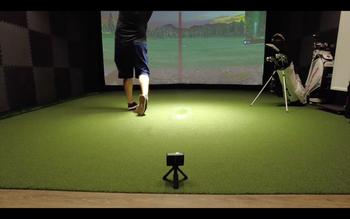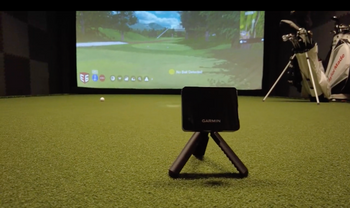Boasting 18 different models in 2018, the new Ping Sigma G line of putters offers golfers tremendous variety in choosing a putter that is best for them. Having received the Gold Rating for both mallet and blade putters on the 2018 Golf Digest Hot List, it is little wonder that the Sigma G line of putters are in such high demand.
Utilizing modern technology and materials, the Sigma G family of putters features a mix of traditional and modern head designs. If you’re a player looking for a high-performing insert that provides ultimate feel and forgiveness , the Ping Sigma G line of putters is sure to satisfy your needs.
Key Features
True Roll Face Technology incorporates variable-depth grooves that get the ball rolling quickly and promote greater forgiveness and consistency across the entire face.
The PEBAX elastomer insert provides soft feel for greater control without sacrificing any ball speed on mishits.
Different head designs are specifically tailored to different putting strokes allowing all players multiple options when choosing a putter.
Ping Sigma G Putter
Ping Sigma G Putter delivers buttery feel and precision with cutting-edge face technology.
Design and Technology
The latest trend in putter design is to create an entire line of putters that have something for everyone. While most manufacturers fall far short of achieving this objective, Ping has exceeded expectations. With 18 unique head shapes and customizable options across the entire line, the Ping Sigma G series is hands-down the most customizable line of putters on the market today.
True Roll Face Technology is the result of years of testing and experimentation. Grooves that are deepest in the center of the face and become gradually shallower toward the heel and toe increase MOI and allow putts to travel the same distance regardless of where they are struck. The depths of all grooves (both in the center and perimeter of the head) are deeper than in previous designs; increasing friction at impact and getting the ball rolling more quickly.
The insert in the Sigma G line is made of PEBAX elastomer that sits on an anodized 6061 aluminum face. Players for whom sound and feel are important, the marriage of these two materials provides a soft, responsive feel without sacrificing the solid sound of a metal face. Because this insert covers the entire face, weight is moved away from the center toward the perimeter of the head creating a higher MOI for increased forgiveness and stability.
Utilizing their Fit For Stroke System, Ping tailored six heads for players with straight strokes, nine heads for slight-arc strokes, and three heads for strong-arc strokes. Within the Sigma G line head weights range from 340 grams to 400 grams and lie angle is also customizable four degrees up or down from standard. Some models are available in a counterbalance option and several different grips come stock as well.

Our Experience
The Ping Sigma G putters are designed to enhance feel and forgiveness, featuring a unique combination of a high-energy Pebax elastomer insert and a milled 6061 aluminum face. This innovative design ensures a softer feel without sacrificing ball speed, making it suitable for various playing styles.
Reviews highlight the putters' impressive aesthetics and performance. Users appreciate the soft feel and consistent roll, although some noted a slightly hollow sound at impact. Overall, the Sigma G putters are well-received for their blend of technology and classic design, making them a strong choice for golfers seeking improved performance on the greens.
Ping Sigma G Putter
Ping Sigma G Putter delivers buttery feel and precision with cutting-edge face technology.
Is the Ping Sigma G Putter Worth It?
Absolutely, while the Ping Sigma G Putter is a great product, there are a few pros and cons that you need to be aware of:
Pros:
Customizable Options: The Sigma G range offers 18 different models tailored to various stroke types, ensuring golfers can find a perfect match for their playing style.
True Roll Face Technology: This feature enhances forgiveness by providing consistent ball speed across the face, even on mishits.
Soft Feel: The PEBAX elastomer insert combined with an aluminum face delivers a soft, responsive feel without sacrificing ball speed.
Cons:
Impact Sound: Some golfers find the sound at impact slightly hollow or tinny, which may affect their perception of feel.
Grip Size: The oversize grip may feel bulky to some users, potentially impacting comfort and control.
Head Weight Variability: While customizable, some players feel certain models are either too light or too heavy for their preference.
Frequently Asked Questions
What Is the Ideal Putter Type for Straight-Stroke Players?
For straight-stroke players, the ideal putter type should offer excellent alignment technology to improve putting performance. The putter should be well-balanced and provide a comfortable grip, allowing for consistent strokes on the green.
How Does the Putter’s Innovative Alignment Technology Improve Putting Performance?
The putter’s innovative alignment technology significantly improves putting performance. Its advanced design ensures precise alignment, enhancing accuracy and consistency on the greens. This feature has notably elevated my putting game, providing a noticeable improvement in performance.
How Does the Putter Ensure Consistency on the Greens?
Ensuring consistency on the greens, the putter’s alignment technology aids in accurate setup and helps maintain a smooth stroke. This leads to improved putting performance and more reliable results, making it a valuable tool for any golfer.
How many models are available in the Ping Sigma G line?
The Ping Sigma G range includes up to 18 models, offering various head shapes such as blades, mid-mallets, and mallets. This variety allows golfers to choose a design tailored to their stroke type and preferences.
What finishes are available for Ping Sigma G putters?
Sigma G putters come in two premium finishes: black nickel and platinum. These finishes cater to golfers' aesthetic preferences while providing a sleek and professional look.
Conclusion
The Ping Sigma G line of putters are everything a player could ask for in a family of putters. With classic and modern head designs that are tailored to specific strokes and the most advanced insert technology anywhere, the Ping Sigma G series provides consistent performance and forgiveness that is sure to be an asset for any player.






